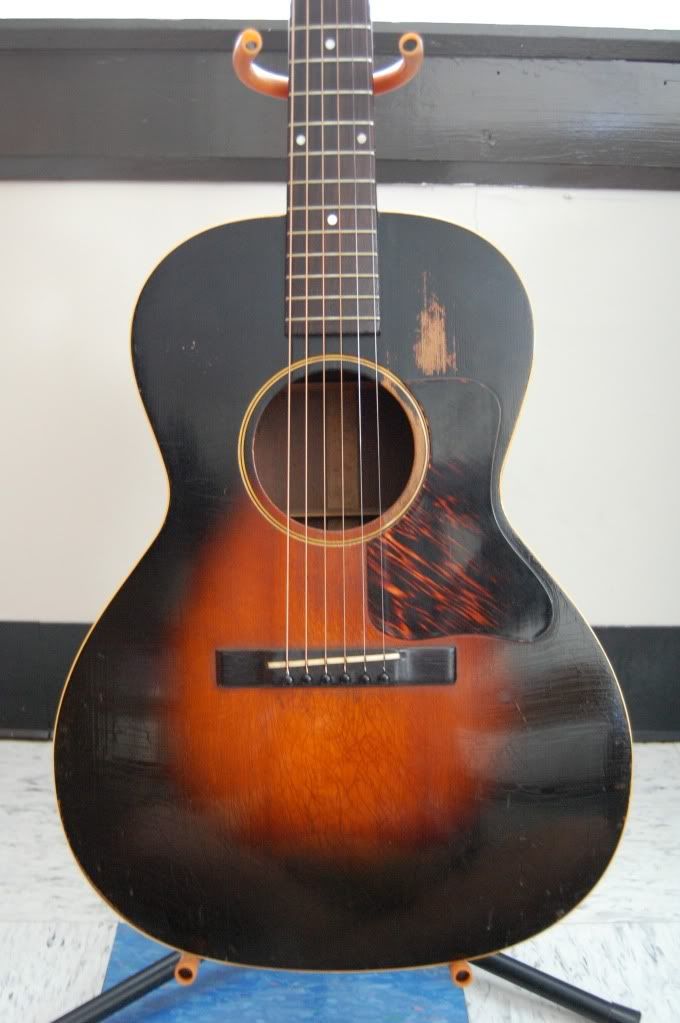The word "rare" gets tossed around a lot on Craigslist and eBay so I contemplated not using it in the title. In my opinion, this one deserves it. This is a 1943 Gibson J-45 made from a laminated flame Maple back, solid flame Maple rims and a bear claw Spruce top. Well, at least one half of the top has some bear claw figure but it's mostly obscured by the sunburst.
Quality wood was difficult to come by during the war, especially Adirondack Spruce planks wide enough for tops. The Gibson company had slimmed their product line down to just 6 models, only two of which were archtop style that commonly used Maple. Because of the shortage of quality materials Gibson started using parts of guitars from the basement to piece a guitar together. This is one of those examples.
This guitar was owned by Gladys Atkins from Porterville, Ca until her death about a decade ago. It is unknown how it received such a great knock as to cause the headstock to break, or who did the repair. All I know is that it is a very solid repair but boy, is it ugly! I haven't decided what I want to do with the front. I can't bring myself to refinish the entire front and lose the original banner. I also don't feel confident that the lower half could be finished and blended very well with the top. I intend to leave it as is for now at least.
The Tone
In short: loud, articulate and very unlike a typical J-45. The Gibson J-45 model is know in part for its low-end growl and break up. They aren't muddy like a D-28 can get in the low end. They have this distinct overdriven low end. This one substitutes the standard J-45 growl for articulation, note separation and sparkly top end.
This Maple J-45 still retains two tonal aspects common of the Mahogany backed J-45s. The first is a very balanced mid-range. It responds well across the figurative EQ curve and would record well. The other is the Gibson thump, but it is different than the Mahogany thump. The thump doesn't sound as bass heavy but is still pronounced.




































